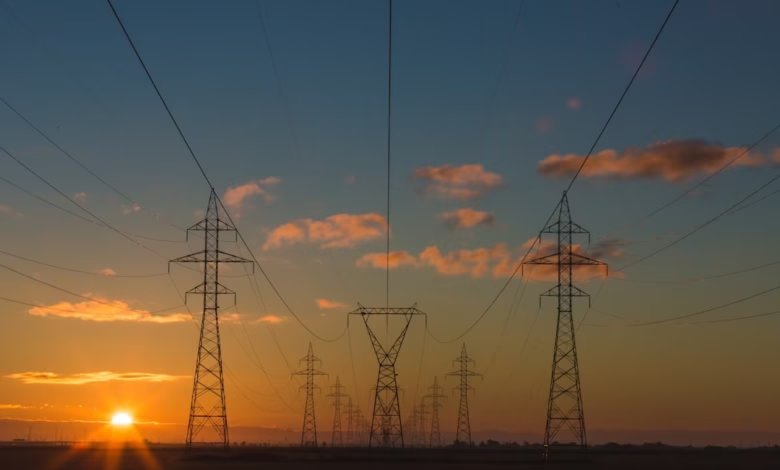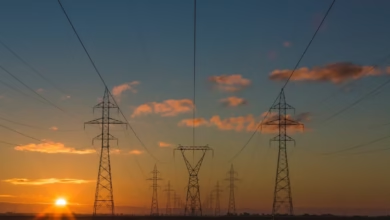Navigating the Global Energy Trade: Insights on Fossil Fuels, Renewables, and the Future of Energy Markets

In an era marked by increasing climate change awareness and a pressing need for sustainable practices, the global trade of energy resources has become more critical than ever. Energy exports and imports play a pivotal role in shaping energy markets, influencing everything from fossil fuels to renewable energy sources. As nations grapple with energy policies aimed at transitioning away from traditional thermal energy and fossil fuels, the dynamics of energy trade are shifting dramatically. This article explores the complex landscape of global energy trade, diving deep into the imports and exports of not just fossil fuels, but also innovative renewable energy solutions like solar power, wind energy, and hydropower.
We will also examine the energy transition strategies that are reshaping markets and paving the way for a greener future, focusing on how renewable energy is becoming a cornerstone of energy economics. Additionally, we’ll highlight innovations in energy transportation and storage, which are enhancing energy security and efficiency in an increasingly interconnected world. With a spotlight on energy R&D, carbon capture technologies, and the rise of smart grids, this exploration of global energy trends underscores the urgent need for investments in offshore energy, hydrogen energy, and distributed energy solutions. Join us as we navigate through the intricacies of energy exports and imports, and uncover how these elements are critical to building a sustainable energy future.
- 1. The Landscape of Global Energy Trade: Imports and Exports of Fossil Fuels and Renewables
- 2. Energy Transition Strategies: How Renewable Energy is Reshaping Energy Markets
- 3. Innovations in Energy Transportation and Storage: Enhancing Energy Security and Efficiency
1. The Landscape of Global Energy Trade: Imports and Exports of Fossil Fuels and Renewables
The global landscape of energy trade is undergoing a significant transformation as countries navigate the complexities of energy imports and exports. Traditionally dominated by fossil fuels, the energy markets are now witnessing a pronounced shift towards renewable energy sources, reflecting broader global energy trends and the urgent need to address climate change.
Fossil fuels, including oil, natural gas, and coal, still play a pivotal role in energy imports and exports for many nations. Countries rich in these resources, such as Saudi Arabia and Russia, continue to dominate the fossil fuel export market, ensuring energy security for import-dependent nations. However, as energy policies evolve to support sustainability, the reliance on fossil fuels is gradually being challenged by the rise of green energy sources.
Renewable energy, particularly solar power, wind energy, and hydropower, is increasingly becoming a central component of global energy trade. Countries like Germany and China are leading in the export of solar and wind technologies, while nations with abundant hydropower resources, such as Norway, are leveraging their capabilities to enhance energy exports. Additionally, bioenergy and hydrogen energy are emerging as vital players in the energy transition, offering innovative solutions to meet growing energy demands sustainably.
Energy storage technologies and energy efficiency measures are also critical in facilitating this transition. As more countries invest in smart grids and distributed energy systems, the ability to store and manage energy efficiently has become essential for balancing supply and demand. Innovations in energy R&D are paving the way for advancements in carbon capture technologies, which are crucial for reducing the environmental impact of fossil fuels and enhancing energy efficiency across sectors.
The interplay between energy imports and exports is further influenced by global energy economics. As emerging economies ramp up their energy consumption, the dynamics of energy transportation and investment are shifting. Countries are increasingly looking to diversify their energy sources to enhance energy security, leading to a rise in offshore energy projects and cross-border energy trade agreements.
In conclusion, the landscape of global energy trade is evolving, reflecting a complex interplay of fossil fuels and renewable energy resources. As nations strive for a sustainable energy future, the focus on energy transition, innovations, and policies will continue to shape the way energy is traded across borders, ultimately impacting global energy security and climate resilience.
2. Energy Transition Strategies: How Renewable Energy is Reshaping Energy Markets
The global energy landscape is undergoing a profound transformation as countries strive to meet climate goals and enhance energy security. Energy transition strategies are at the forefront of this evolution, reshaping energy markets and paving the way for a more sustainable future. The shift from fossil fuels to renewable energy sources, such as solar power, wind energy, hydropower, and bioenergy, is central to this transition.
As nations increasingly prioritize energy efficiency and low-carbon technologies, the demand for renewable energy is surging. This shift is not merely a trend; it is a fundamental change in energy economics driven by the need to combat climate change and reduce dependency on fossil fuels. The integration of renewable energy into energy markets requires innovative approaches, including energy storage solutions, which are essential for managing the intermittent nature of resources like solar and wind power.
Investment in energy R&D has accelerated, leading to significant advancements in energy innovations. Technologies such as hydrogen energy and carbon capture are gaining traction, providing new avenues for reducing emissions and enhancing energy security. Smart grids play a crucial role in this transition, enabling more efficient energy transportation and distribution, while also facilitating the integration of distributed energy systems.
Moreover, the rise of electric vehicles and offshore energy projects is reshaping the energy landscape, prompting shifts in energy policy and regulatory frameworks. As countries embrace green energy, energy exports and imports are also evolving, reflecting the changing dynamics of global energy trade. Nations are increasingly looking to diversify their energy sources and bolster energy security through strategic partnerships and investments in renewable energy infrastructure.
In conclusion, the energy transition is not just about replacing fossil fuels with renewable energy but involves a comprehensive rethinking of energy markets, policy frameworks, and investment strategies. As global energy trends continue to evolve, the focus on sustainable energy solutions will be paramount in driving economic growth while addressing the urgent challenges posed by climate change.
3. Innovations in Energy Transportation and Storage: Enhancing Energy Security and Efficiency
Innovations in energy transportation and storage play a critical role in enhancing energy security and efficiency within the global energy markets. As countries transition from traditional fossil fuels to renewable energy sources, such as solar power, wind energy, and hydropower, the demand for advanced energy storage solutions has increased significantly. These innovations are essential for managing the intermittent nature of renewable energy and ensuring a stable supply.
One of the notable advancements in energy storage is the development of battery technologies. Improved lithium-ion batteries and emerging alternatives, like solid-state batteries, provide efficient means to store energy generated from renewable sources. These technologies not only enhance energy efficiency but also support the widespread adoption of electric vehicles (EVs), further promoting the use of green energy.
In addition to storage, energy transportation is undergoing significant transformations. Smart grids, for example, enable better management of energy flows from multiple sources, including distributed energy systems. These grids utilize real-time data to optimize energy distribution, reduce losses, and enhance energy security. Furthermore, innovations in hydrogen energy transportation, such as pipelines and specialized storage facilities, facilitate the movement of hydrogen—a key player in the energy transition—across various regions.
The role of carbon capture technologies also cannot be overlooked as they contribute to the efficiency of fossil fuel usage while minimizing environmental impact. By integrating carbon capture with existing thermal energy infrastructure, it becomes feasible to continue utilizing fossil fuels in a more sustainable manner during the ongoing energy transition.
Energy investment in R&D is crucial for driving these innovations forward. As countries establish energy policies that prioritize sustainability and climate change mitigation, the focus on enhancing energy efficiency and security through innovative solutions will only grow. This commitment will ultimately shape the future of energy exports and imports, influencing global energy trends and fostering a robust energy economy.
In summary, the integration of cutting-edge technologies in energy transportation and storage is pivotal for achieving energy security and efficiency. The ongoing evolution in energy markets, driven by innovations in renewable energy, hydrogen energy, and smart grid technologies, is a testament to the global commitment toward a sustainable and resilient energy future.
In conclusion, the global trade of energy resources is undergoing a transformative shift driven by the growing emphasis on renewable energy and energy efficiency. As we explore the landscape of energy imports and exports, it is evident that fossil fuels still play a significant role, but their dominance is increasingly challenged by innovations in energy transportation, such as smart grids and advanced energy storage solutions. The ongoing energy transition is reshaping energy markets, paving the way for a diversified mix that includes nuclear energy, hydropower, bioenergy, and thermal energy, alongside burgeoning sectors like hydrogen energy and offshore energy.
As countries invest in green energy technologies and adopt forward-thinking energy policies, we can anticipate a more resilient energy economy that prioritizes energy security and addresses the pressing challenges of climate change. The integration of electric vehicles and the development of carbon capture technologies indicate a robust commitment to reducing carbon footprints while enhancing energy exports. Furthermore, energy R&D continues to play a crucial role in driving innovations that improve energy economics and promote distributed energy systems.
Ultimately, the future of global energy trade will hinge on our ability to adapt to emerging global energy trends, invest strategically in energy innovations, and embrace sustainable practices that not only meet current energy demands but also pave the way for a cleaner, more efficient energy landscape. As we navigate this complex journey, collaboration across nations and sectors will be key to unlocking the full potential of our energy resources and achieving a sustainable energy future for all.





